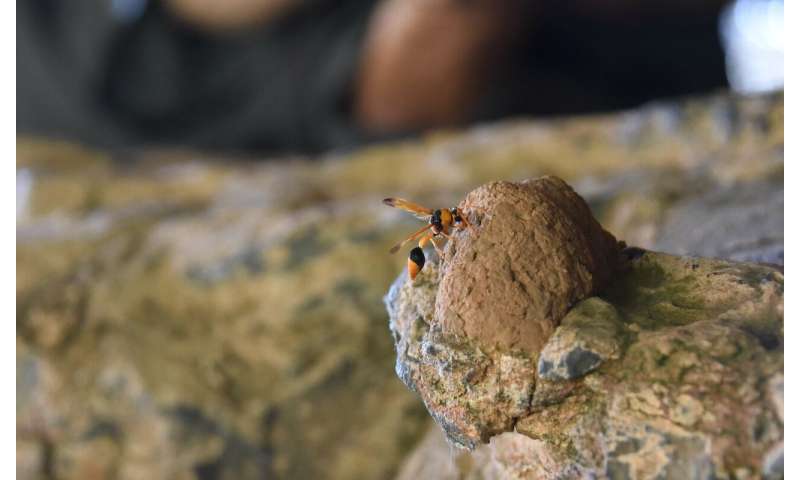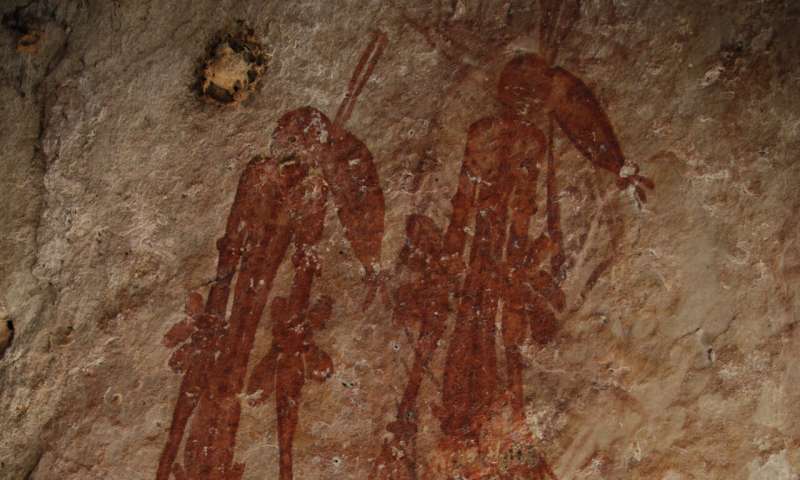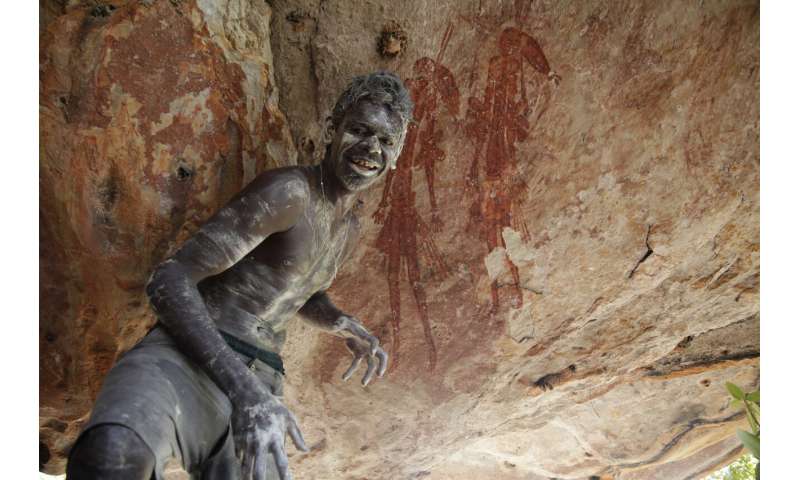Wasp nests used to date ancient Kimberley rock art

Mud wasp nests have helped establish a date for one of the ancient styles of Aboriginal rock art in the Kimberley.
University of Melbourne and ANSTO scientists put the Gwion Gwion art period around 12,000 years old.
"This is the first time we have been able to confidently say Gwion style paintings were created around 12,000 years ago," said Ph.D. student Damien Finch, from the School of Earth Sciences at the University of Melbourne. "No one has been able present the scientific evidence to say that before."
One wasp nest date suggested one Gwion painting was older than 16,000 years, but the pattern of the other 23 dates is consistent with the Gwion Gwion period being 12,000 years old.
The rock paintings, more than twice as old as the Giza Pyramids, depict graceful human figures with a wide range of decorations including headdresses, arm bands, and anklets. Some of the paintings are as small as 15cm, others are more than two meters high.
The details of the breakthrough are detailed in the paper 12,000-year-old Aboriginal rock art from the Kimberley region, Western Australia, now published in Science Advances.
More than 100 mud wasp nests collected from Kimberley sites, with the permission of the Traditional Owners, were crucial in identifying the age of the unique rock art.

"A painting beneath a wasp nest must be older than the nest, and a painting on top of a nest must be younger than the nest," Mr Finch said. "If you date enough of the nests, you build up a pattern and can narrow down an age range for paintings in a particular style."
Lack of organic matter in the pigment used to create the art had previously ruled out radiocarbon dating. But the University of Melbourne and ANSTO scientists were able to use dates on 24 mud wasp nests under and over the art to determine both maximum and minimum age constraints for paintings in the Gwion style.
The project was initiated by Professor Andy Gleadow and Professor Janet Hergt, from the School of Earth Sciences, and started in 2014 with funding from the Australian Research Council and the Kimberley Foundation. It is the first time in 20 years scientists have been able to date a range of these ancient artworks.

"The Kimberley contains some of the world's most visually spectacular and geographically extensive records of Indigenous rock art, estimated to include tens of thousands of sites, only a small fraction of which have been studied intensively," said Professor Gleadow.
Professor Hergt said being able to estimate the age of Gwion art is important as it can now be placed into the context of what was happening in the environment and what we know from excavations about other human activities at the same time.
Dr. Vladimir Levchenko, an ANSTO expert in radiocarbon dating and co-author, said rock art is always problematic for dating because the pigment used usually does not contain carbon, the surfaces are exposed to intense weathering and nothing is known about the techniques used thousands of years ago.
"Beeswax or resin have also been used—usually on more modern samples," Dr. Levchenko said.
"Although soil is full of carbon, most of it is easily degradable. However, charcoal is more likely to survive for longer periods. There is lots of black carbon in Australian soil because of bushfires."
Explore further
More information: Damien Finch et al. 12,000-Year-old Aboriginal rock art from the Kimberley region, Western Australia, Science Advances (2020). DOI: 10.1126/sciadv.aay3922
Provided by University of Melbourne





















No comments:
Post a Comment